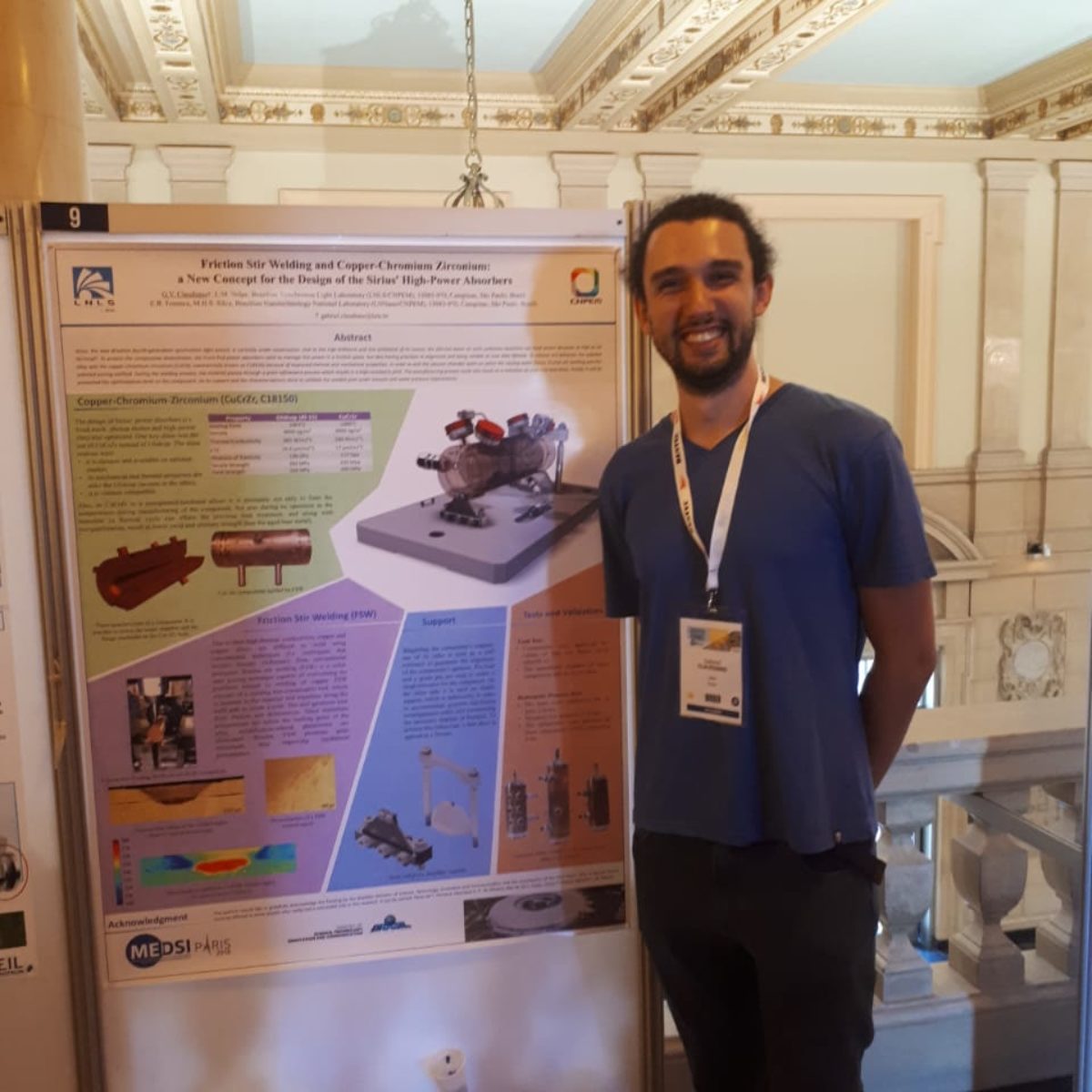
Work on components for Sirius was elected best poster
Gabriel Vinícius Claudiano, member of the Brazilian Synchrotron Light Laboratory (LNLS), was awarded the prize for best poster in the category “young engineer under 30” during the tenth edition of the MEDSI (Mechanical Engineering Design of Synchrotron Radiation Equipment and Instrumentation) conference, which was held in Paris, France, between June 25th and 29th.
Gabriel’s work is related to the development of components for the beamlines of the new Brazilian synchrotron light source, Sirius. These components are located at the interface between the storage ring and the beamlines, which is called front-end, and their function is to absorb part of the synchrotron light beam to protect sensitive equipment.
To produce these components, Gabriel and colleagues selected a copper-chromium-zirconium alloy as material, which withstands both the assembly steps and the high voltages caused by the incidence of the synchrotron light beam.
However, this alloy undergoes structural changes when heated above 450°C, complicating the manufacturing process by conventional welding techniques. For that reason, the team developed a friction stir welding process in partnership with researchers from the Brazilian National Nanotechnology Laboratory (LNNano). The award-winning poster presented details on the material, the welding process, the design of the final component and its support, and the tests used to validate the production of the components.
This year, the award in this category was sponsored by the Lightsources.org collaboration, of which LNLS is a member.
In 2016, the previous edition of the event awarded another LNLS member, Marlon Saveri Silva, the prize for the best poster in the same category. Learn more here.
The event will take place from November 6th to 9th, at the CNPEM campus in Campinas, SP
Construction works are at 84% and the electron accelerator begins to be assembled in March